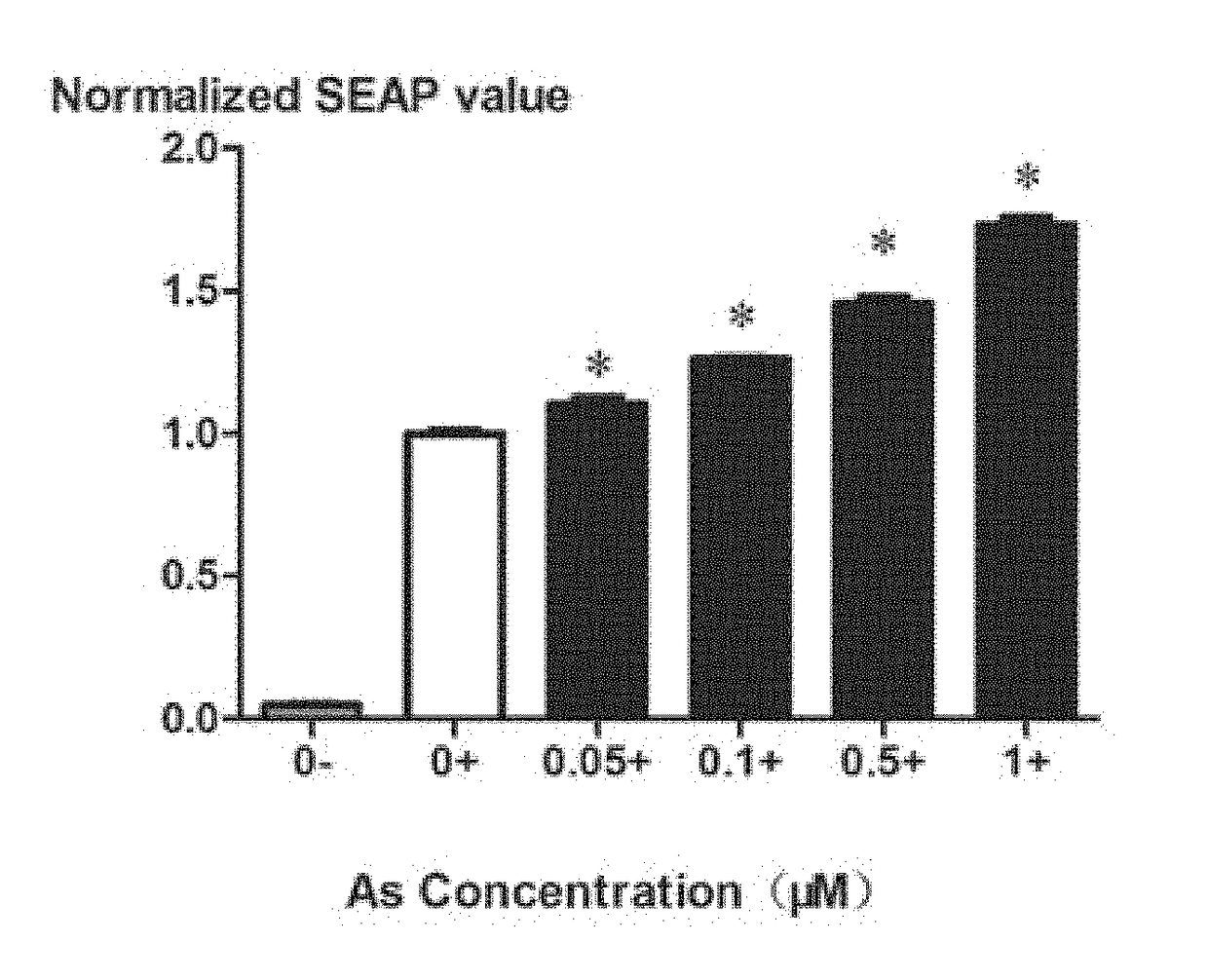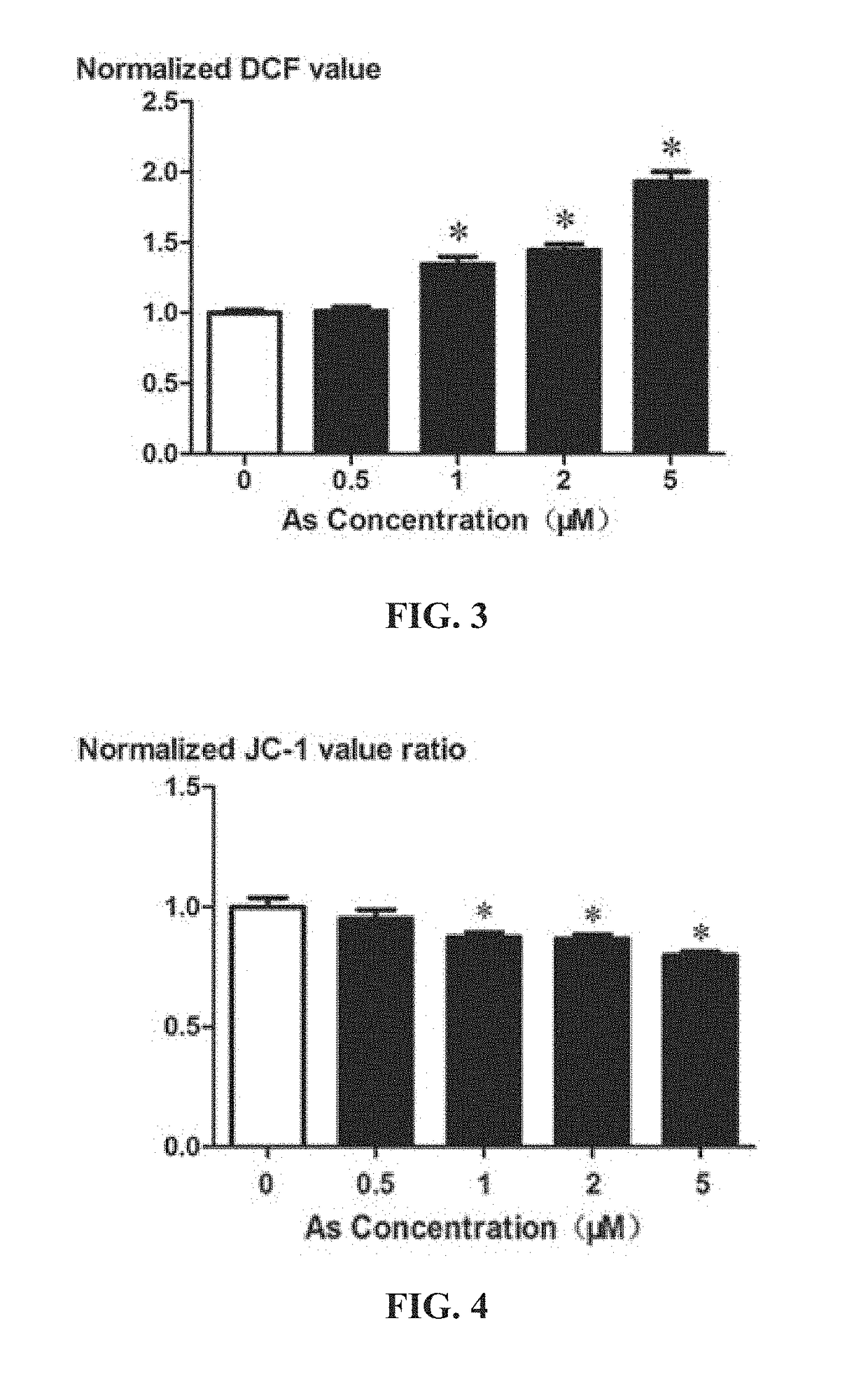Methods for assessing toxicity
a cytotoxic and toxicity technology, applied in the field of cytotoxic damage detection, can solve the problems of water pollution, different mechanisms of toxicity of pollutants, serious human health threat, etc., and achieve the effect of improving the detection sensitivity of cytotoxic damage and easy detection
- Summary
- Abstract
- Description
- Claims
- Application Information
AI Technical Summary
Benefits of technology
Problems solved by technology
Method used
Image
Examples
example 1
[0033]Step 1, construct the lentivirus CHOP-SEAP plasmid vector: The pHBLV-CMVIE-ZsGreen-Puro vector was cleaved with EcoRI and XhoI enzymes, extracted by gel electrophoresis; primers were designed according to SEAP gene and CHOP gene sequences and PCR amplification was performed. The amplified fragments were ligated with the vector and then transformed into DH5a competent cells. After transformation, bacterial strains were selected from the plate and shaken at 250 rpm and 37° C. PCR identification of the bacterial strains was performed to obtain positive clonal bacterial liquid. The positive clonal bacterial liquid was sent for sequencing.
[0034]Step 2, Lentivirus CHOP-SEAP Plasmid Vector Extraction: The lentiviral CHOP-SEAP plasmid vector was extracted from the positive clonal bacterial liquid obtained in step 1, and the extraction was carried out according to the instructions of the plasmid extraction and purification kit. When the lentivirus CHOP-SEAP plasmid vector concentration...
example 2
[0041]Using water samples as poisons, dilution concentration gradient: 0, 0.02%, 1% and 2% (The dilution concentrations are 0, 1, 50, and 100 times the original concentrations, respectively). Parallel comparison test was carried out. The transfected Hela cells were exposed to different concentrations of water samples for 24 h. The supernatant of Hela cells was incubated at 65° C. for 30 min, and the SEAP activity of Hela cells was detected by a SEAP Reporter Gene Assay kit comprising a cell-based alkaline phosphatase standard and a SEAP substrate (SEAP activity has the effect of indicating luminescence, easy to monitor). According to the SEAP Reporter Gene Assay kit protocol, the cell-based alkaline phosphatase standard and the sample were added to the 96-well white plate at 10 μL per well. Each well was added with 50 μL the SEAP substrate and the 96-well white plate was incubated for 10-30 min. The chemiluminescence was detected at room temperature. The experimental results are sho...
PUM
| Property | Measurement | Unit |
|---|---|---|
| Temperature | aaaaa | aaaaa |
| Fraction | aaaaa | aaaaa |
| Fraction | aaaaa | aaaaa |
Abstract
Description
Claims
Application Information
 Login to View More
Login to View More - R&D
- Intellectual Property
- Life Sciences
- Materials
- Tech Scout
- Unparalleled Data Quality
- Higher Quality Content
- 60% Fewer Hallucinations
Browse by: Latest US Patents, China's latest patents, Technical Efficacy Thesaurus, Application Domain, Technology Topic, Popular Technical Reports.
© 2025 PatSnap. All rights reserved.Legal|Privacy policy|Modern Slavery Act Transparency Statement|Sitemap|About US| Contact US: help@patsnap.com



